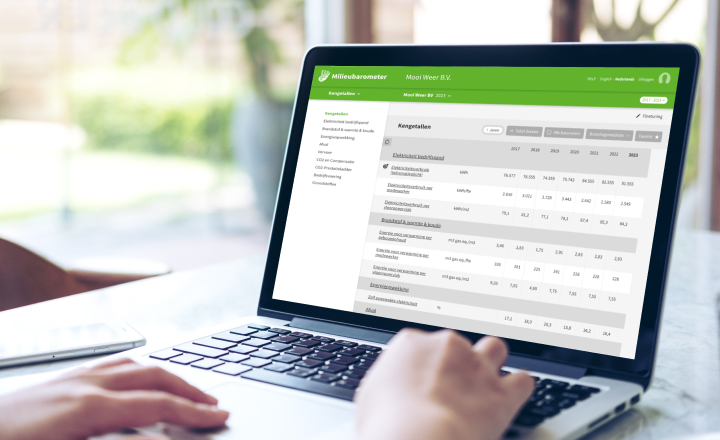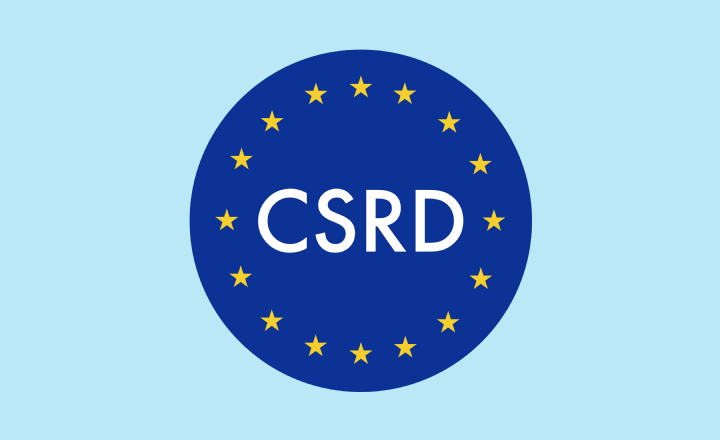Fed back electricity no longer deducts CO₂ from footprint
From April 29, 2022, ‘returned self generated electricity’ in the Envirometer has a factor of 0 kg CO₂/kWh instead of a negative factor for gray power. This also effects existing, older years. If you used the item ‘returned self generated electricity’, the CO₂ footprint in your Envirometer is higher than before.

Years ago, when Stichting Stimular added ‘returned electricity’ to the Envirometer, it seemed logical that you would receive a ‘reward’ in your CO₂ footprint for supplying green electricity to the electricity grid. So solar power supplied to the grid resulted in a deduction from your own CO₂ footprint. At the time, very little green electricity was returned and almost never more than the company used in electricity. Now it turns out that was the wrong choice.
Why no longer CO₂ deduction for returned electricity?
- By feeding green energy back to the grid, you have become a supplier of green electricity. That is not part of your internal business operations and therefore not part of your own CO₂ footprint.
- If you return electricity, you also sell the Guarantees of Origin (GoO) of your electricity. Your supplier will sell the green energy supplied by you as green energy to a third party. The environmental benefit of the green electricity is therefore for the customer of the energy company.
Now this has been changed:
- the Envirometer is in line with the international GHG protocol (GreenHouseGas) and ISO 14064, which state that green electricity fed back into the electricity grid should not count as CO₂ reduction.
- it is easier and more unambiguous to fill in the fed back green electricity (until now, the explanation of the item stated that you did not have to fill in more than you used when returning it).
- calculations of CO₂ footprint and key figures in the Envirometer are more accurate and you run no risk of net negative CO₂ emissions in your footprint or key figure.
- there is an extra incentive to use self-generated sustainable electricity as much as possible.
Advice on how to deal with this change
If you have used ‘returned electricity’ for one or more years, your CO₂ emissions for electricity have now become higher. Below are some tips on how to deal with it.
- If you have 100% green energy and if you had limited ‘of which green energy’ to the net purchased electricity (purchased minus returned), the calculation was correct, but not anymore. To make it right again, fill in the total purchased electricity at ‘of which green energy’.
- If you have entered gray power and ‘returned electricity’, then the calculation has been adjusted and improved.
- If you published CO₂ footprints on the Envirometer website, these will not change automatically. If you want to adjust a ‘public footprint’: first ‘stop sharing’ and then share again.
- If you have entered the net purchased electricity (purchased minus returned) for purchased electricity, you are still calculating with a negative CO₂ factor for returned electricity. You can correct this by dividing the net power into purchased and returned power.
Calculating a CO₂ footprint has thus been improved, in line with the GHG protocol and entering data has become more logical (and therefore easier), especially for companies that produce more green energy than they use themselves.
Get started with the Envirometer
Want to get started immediately? No problem! Take out a subscription today and get started by filling in your details.


20- february-2025 The annual update of the CO₂ emission factors took place at the beginning of February 2025, on www.co2emissionsfactors.nl. All changes were implemented in the Envirometer on February 20. It is useful for Envirometer users to know the most important changes.

The reporting of greenhouse gas emissions and energy consumption in the Envirometer complies with the Greenhouse Gas (GHG) Protocol and the European Sustainability Reporting Standards (ESRS) requirements of the Corporate Sustainability Reporting Directive (CSRD). A key component is the calculation of Scope 2 emissions using two methods: the location-based and the market-based approach.

More and more organizations are being asked to map their Scope 3 emissions in addition to Scope 1 and 2. With the new features of the Envirometer, you can more accurately fill in Scope 3 and present the results according to the guidelines of the GHG Protocol, CSRD, and the CO₂ Performance Ladder.